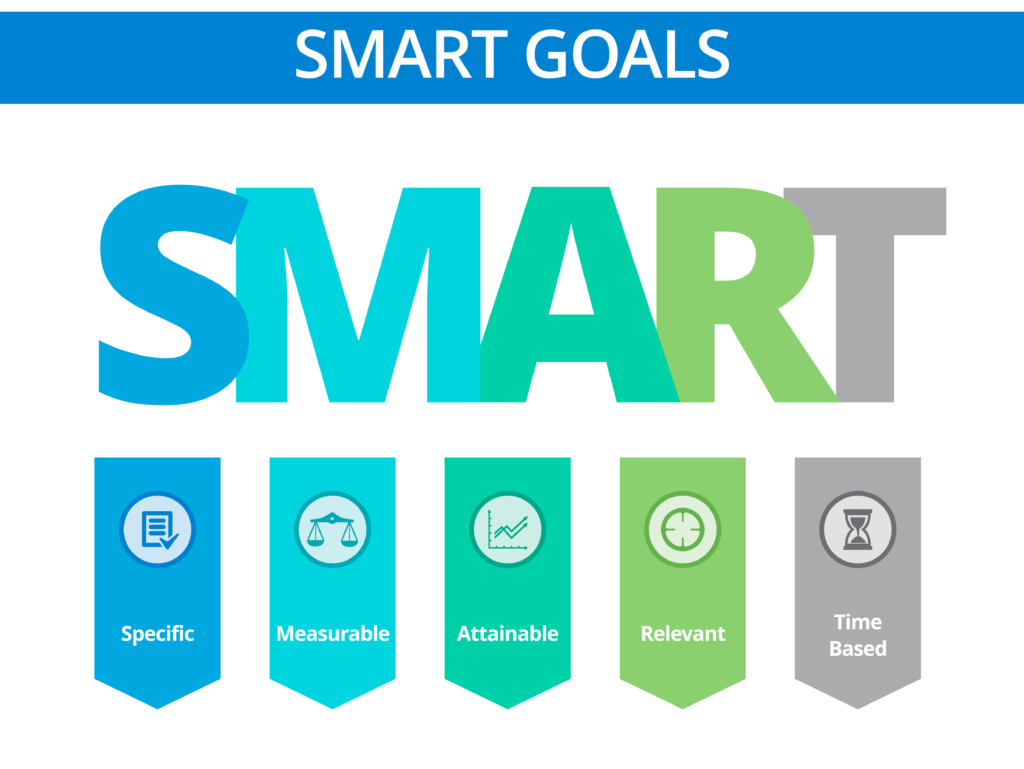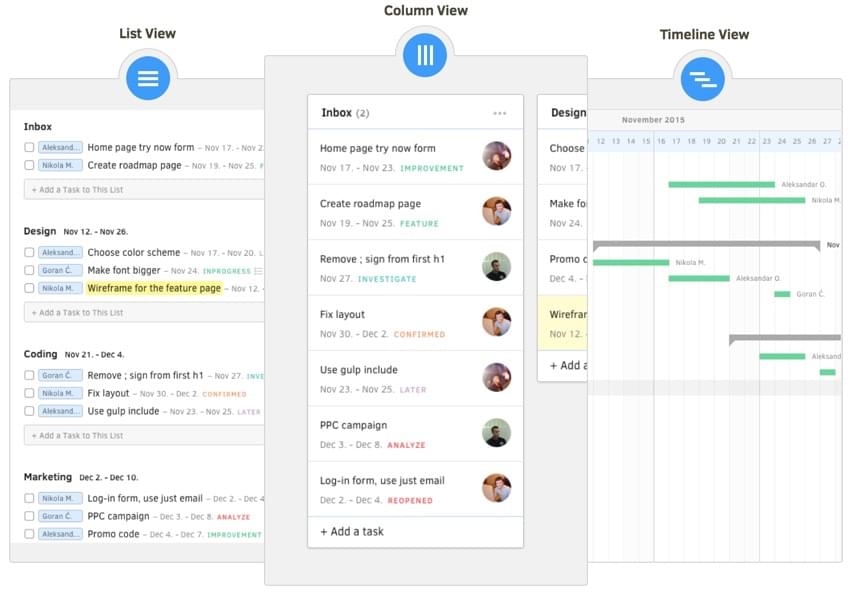Are you one of the many business owners or marketers who think your product launches are the only time to run marketing campaigns? Every marketing action should be considered a marketing campaign by you and your team.
Often, the key to success is consistency — staying organized and analyzing all of your results to make sure you are getting the most out of every effort you put towards marketing your brand.
Create a Content Calendar
You will want to start recording all of your ideas and plans for content campaigns to streamline your brainstorming process and to schedule content before it is needed.
Excel is a simple tool that is fully capable of handling a basic design to help you track your plans. Track upcoming events for your company (holidays, product launches, conventions, etc.), as well as what content you specifically plan to publish. You may shape some of your content ideas to focus on an upcoming season or event that impacts your target audience. If you don’t want to create your own, there are plenty of free content calendar templates available.

Set S.M.A.R.T. Goals
A study of businesses, organizations, and professionals by the Dominican University of California found that 70% of the participants reported successful achievement of their goals when they specifically wrote down and tracked their efforts (compared to the 35% success rate among those who kept their goals to themselves and did not write them down).

Create deadlines and specific goals to ensure you are meeting your own expectations. Share them with your team to keep the projects rolling in the right direction at the right pace. Writing down S.M.A.R.T. goals will help you stay on track:
Specific – Use numbers and percentages to define exactly what you want to improve or increase. Include the format and platform you plan to use. Don’t use generic goals such as “increase followers” or “place more guest posts”. Instead, define specific goals like “Increase Facebook following by 15% in X weeks by posting X times a day.”
Measurable – You want to know by the end of your campaign if you reached your goal or if you need to invest further efforts before you can mark this task as done. If you didn’t use any metric while specifying the goals, it will be almost impossible to reach a clear conclusion on the success of your project.
Attainable – Every goal should focus on something you can actually control or affect.
Realistic – If you are always overestimating your abilities, then you and your team will likely be frustrated by consistent failures. Your budgets and deadlines should be realistic as well.
Timely – A deadline will help keep each campaign and task confined to a specific week, quarter, segment or year — giving you a specific point at which you should be checking your analytics and assessing your efforts. For larger goals, break up your time with milestones to keep your team on track and increase the likelihood of a successful outcome. Some project management tools have the ability to create task lists with different views, for example for specifying tasks to ensure you meet your milestones (and, ultimately, your big project deadline):

Use a Project Management Tool
In 2014, 77% of all responding companies said they were using some type of a project management tool. Among high-performing companies, 87% reported using a project management tool.
Juggling tasks is made simpler with a task management tool. A good project management tool will help you keep track of your team communications, tasks, calendar and progress. With one simple dashboard for keeping track of your goals and updates, you will be better able to prioritize and focus.
You can even add your clients so they can see your activity. It’s a great way to builds trust by improving transparency and helps communicating smaller changes on specific tasks.
High-performing organizations value project management (89%) and 57% work to align their projects with their overarching business strategy, according to the Project Management Institute.
Foster Collaboration
The University of Ottawa found that a third of business projects fail due to the lack of participation on the part of upper management.
When you have multiple projects going and different team members involved, you need to have solid communication if you want to avoid any confusion or dropped balls. A good collaboration tool will make communication easier, faster and more intuitive through features like team chat and an internal social platform to help you keep up with your team updates. Multiple projects times multiple tasks times multiple milestones can lead to a respectable number of updates that would otherwise be impossible to track.
Your team will even be able to make edits or notes based on an assigned role and granted permissions. Plus, you can use your project management tool to track the time each participant spends on a given project, helping you bill and invoice more accurately.
Track the Results
You will want to keep track of your campaigns to give yourself a better understanding of what actually works and what doesn’t, tracking your ROE (return on effort). You don’t want to spend a lot of effort in trying to craft campaigns that aren’t effective. You will want to track specifics, such as:
- Campaign start date
- Platform
- Collaboration team involved
- Topic
- Status (in progress, started, completed, schedules, etc.)
- Subject line or title
- Contacts
- Target audience/segment/persona
- Images
- Personalization notes
- Social share stats
- Links
Knowing these details will help you have better insights into your metrics after a campaign. Keep tracking your efforts in hopes of recognizing a pattern that you can adjust in the future. Track your recorded results to see how different campaign types and details will affect your end goals:
- Number of emails sent
- CTR (click-through rate)
- Bounce rate
- Open rate
- New leads generated
When you’ve finished determining the activity, don’t forget to clean house. Keeping your email, text messaging and followers all pared down to only those that care will help your marketing campaigns land among qualified leads.
Segment Your Lists
MailChimp found that across the board, segmented campaigns did better than non-segmented (achieving a 14% higher open rate and 53% higher percent click-through rate than non-segmented campaigns). Keep your campaigns further organized by knowing who is on your contacts list. This will help you craft future content and gain a higher conversion rate with targeted marketing.
Don’t get overwhelmed by the ever-increasing marketing demands of a changing industry. The more organized you stay, the more deftly you will be able to handle your branding needs and audience expectations while adjusting to future marketing shifts.
Frequently Asked Questions (FAQs) about Organizing Marketing Campaigns
How can I effectively organize my marketing campaigns?
Organizing your marketing campaigns effectively requires a clear understanding of your goals, target audience, and the resources at your disposal. Start by defining your campaign objectives and identifying your target audience. Then, create a detailed plan outlining the strategies and tactics you will use to reach your audience and achieve your goals. Use project management tools to keep track of tasks, deadlines, and progress. Regularly review and adjust your plan as necessary to ensure it remains aligned with your objectives.
What are some common mistakes to avoid when organizing marketing campaigns?
Some common mistakes include not setting clear objectives, failing to identify a target audience, not tracking results, and not adjusting strategies based on performance. Avoid these mistakes by setting SMART (Specific, Measurable, Achievable, Relevant, Time-bound) goals, conducting thorough market research, using analytics tools to track performance, and being flexible and adaptable in your strategies.
How can I measure the success of my marketing campaigns?
Success can be measured using various metrics, depending on your campaign objectives. These may include website traffic, lead generation, conversion rates, customer engagement, and sales revenue. Use analytics tools to track these metrics and evaluate your campaign’s performance.
How can I improve the effectiveness of my marketing campaigns?
Improving effectiveness involves regularly reviewing and adjusting your strategies based on performance. Use analytics to identify what’s working and what’s not, and make necessary changes. Also, keep up with industry trends and incorporate innovative strategies to stay competitive.
What tools can I use to organize my marketing campaigns?
There are various tools available, including project management tools like Trello or Asana, analytics tools like Google Analytics, and marketing automation tools like HubSpot or Marketo. Choose tools that best fit your needs and budget.
How can I ensure my marketing campaigns are aligned with my business goals?
Start by clearly defining your business goals. Then, ensure your campaign objectives are aligned with these goals. Regularly review your campaigns to ensure they are contributing to your business goals.
How can I effectively manage my marketing budget?
Start by setting a clear budget for your campaign. Allocate funds to different strategies based on their potential return on investment. Regularly track your spending and adjust as necessary to stay within budget.
How can I increase customer engagement in my marketing campaigns?
Increase engagement by creating compelling content that resonates with your audience. Use interactive elements like quizzes or polls, and encourage user-generated content. Also, use social media to interact with your audience and build relationships.
How can I use data to improve my marketing campaigns?
Data can provide valuable insights into your audience’s behavior and preferences. Use analytics tools to collect and analyze data, and use these insights to refine your strategies and make data-driven decisions.
How can I keep my team aligned and coordinated during a marketing campaign?
Use project management tools to assign tasks, set deadlines, and track progress. Regularly communicate with your team to ensure everyone is on the same page. Also, hold regular meetings to discuss progress and address any issues.
 Rachel McPherson
Rachel McPhersonRachel is currently working as the vice president of communications at Active Collab. After finishing her master's degree in Communications she pursued a career in the digital industry, most notably in marketing and public relations.





